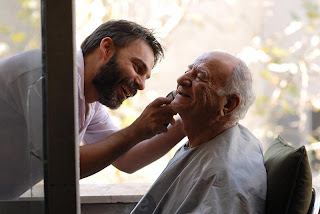It's my second post in this blog about Persian New Year!
If you have missed the last year post, check it out here: Persian New Year
I have some pictures to post (unfortunately they don't belong to me!) just to show you the overall mood and tradition and will explain about Hafs Siin (Seven S) and what they represent.
So, let's start of with Sabzeh سبزه (wheat or barely sprouts) symbolise Rebirth
Siib سیب (apple) symbolise Beauty and Health
Samanoo سمنو (sweet pudding made from wheat germ) symbolise Affluence
Siir سیر (garlic) symbolise Medicine
Senjed سنجد (dried oleaster fruit) symbolise Love
Serkeh سرکه (vinegar) symbolise Patience and Old-age
Somaq سماق (sumac) symbolise the color of Sunrise
Well, it's not all that we set on the table. We would also have :
Sonbol سنبل the fragrant hyacinth flower as it represent the Coming of Spring
Sekkeh سکه coins symbolise Prosperity
Decorate and painted Eggs تخم مرغ رنگی that symbolise Fertility
A bowl of goldfish ماهی گلی that represent Life
A bowl of water and a bitter orange آب و نارنج which has quite scientific meaning of Earth "floating"
in space and also Mirror آیینه to represent Sky and Candles شمع\شمعدان which represent Fire.
Every year on 20 or 21st March (depends if it's a Leap Year or not) we wait for a specific moment to celebrate the new year. This year we say goodbye to 1390 and say hello to 1391 on Tuesday at 8:30:16 in Iran's time.
Every year on 20 or 21st March (depends if it's a Leap Year or not) we wait for a specific moment to celebrate the new year. This year we say goodbye to 1390 and say hello to 1391 on Tuesday at 8:30:16 in Iran's time.
Isn't it fantastic that we have exact time each year to celebrate?
Thanks to Omar Khayyám who made our special and precise calendar long long time ago.
Thanks to Omar Khayyám who made our special and precise calendar long long time ago.
HAPPY NEW YEAR
سال نو مبارکـــــــــــــــــ













